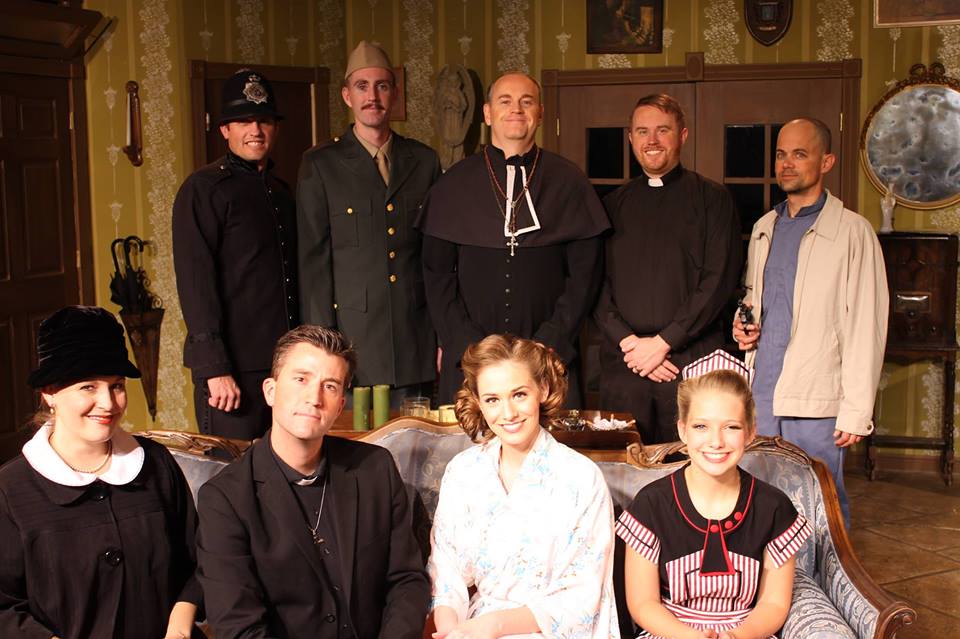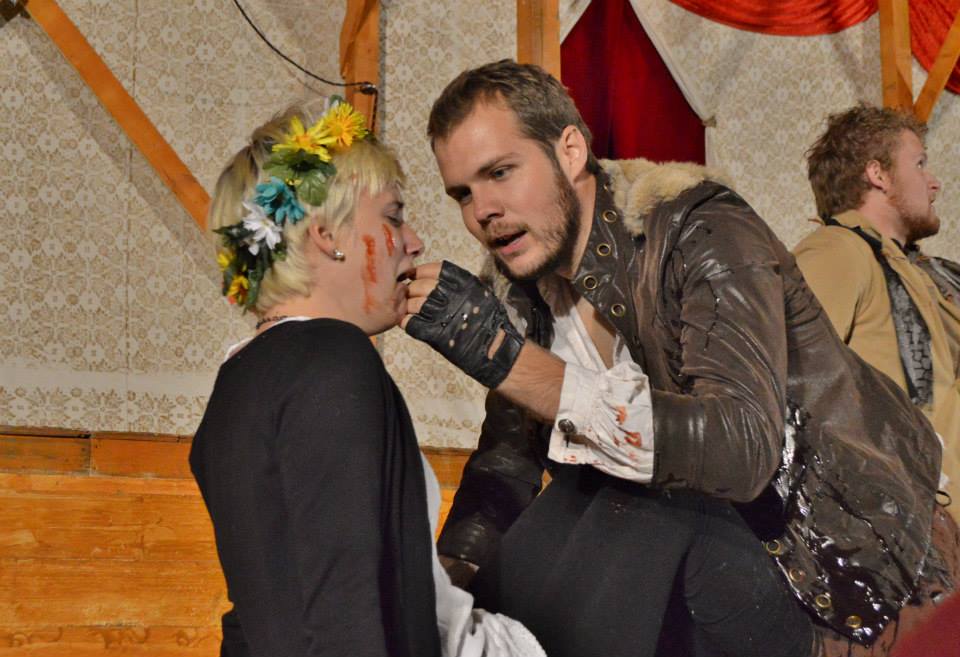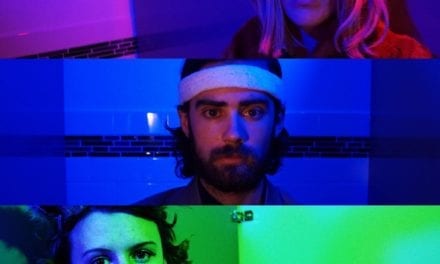SALT LAKE CITY – Immigrant’s Daughter has a penchant for finding the right found spaces, and the space they found for their current production of Misery, co-produced with Lil Poppet Productions, is no exception. As with their prior productions, this space can be a bit challenging to find—but it’s all part of the adventure, so plan to arrive early. While it’s staged on campus at Westminster University, it is not in the performing arts building as one might expect. Instead, Misery is staged in the basement of the ceramics center. I parked in the garage near the performing arts center at the southwest end of campus and had a decent walk to find the show. But the walk across the deserted campus in the dark is actually a pretty good moodsetter for the production itself.
William Goldman‘s Misery, based on the Stephen King novel, is the story of a writer who is rescued from a car accident in a blizzard, held captive by his rescuer, and forced to write a sequel to his latest novel. And although it may not be considered typical Halloween fare, it is rather terrifying. After entering the ceramics building, I was escorted by an usher outside and around the back of the building to a dark staircase descending to a back door. Upon entry into the classroom-turned-theater, I felt like I’d stumbled into a private space. There is a man asleep in a hospital bed with his arm in a sling in the center of the room, and two rows of seats against the back wall. It feels awkwardly voyeuristic and incongruous as the audience of two dozen people chatters away under soft classical piano music while the man continues to sleep in the bed for the duration of the preshow. Once I was finally able to take my eyes off of him, I noticed the sparse but effective small details of the scene. There are bare bulbs on red cords snaking their way in and out of the drop ceiling frame devoid of the expected ceiling tiles. A rough board with small makeshift can lights affixed to it as foot-lighting sits on the floor in front of the audience, barely delineating stage from house.
Director Morag Shepherd’s blocking is simple and effective—it has to be considering that the protagonist spends most of the production in bed. The bed, jutting straight out from the upstage wall throughout the first part of the show, creates a stark, intrusive feel at first, and then with a simple angle shift of the bed, the space opens up and the whole show transitions into the ever darker arc of the plot. Shepherd skillfully uses off-stage sound to drive the plot in interesting ways. In particular, the first time the sheriff, played by Alvaro Cortez, appears at the door, he remains entirely unseen as Annie, played by Stephanie Stroud, converses with him from the cracked door. By not quite allowing the sheriff into the action of the play, the suspense of whether Paul (played by Tyson Baker) will ever escape continues to build. Moments like these showcase Shepherd’s directing acumen and ability to make small choices that have great impact. The pacing of the nearly two-hour production is somewhat slow, although it doesn’t seem to drag at all as there is little fluff in Goldman’s script; and Shepherd’s direction manages to find the pacing sweet spot of deliberate without dragging.
The technical elements are surprisingly strong in such an unusual space. Windows are covered with newsprint, adding to the claustrophobic mood while facilitating full blackouts, which are used both to enhance the suspense and indicate the passage of time. The one odd transition that could have used such a black-out was after Annie hovers over Paul’s lifeless body and creepily delivers her signature line “I’m your number one fan.” I found this a confusing start to the play as I got the sense that time was passing between these two segments. This was a very minor bit of awkwardness that was easily overcome as the production continued.
Shepherd is also credited for the production’s sound design, and the music used throughout is pleasantly disturbing given the juxtaposition of light and peaceful piano music inside the hellish nightmare of Paul’s imprisonment. Stroud is credited for the set and props and there are nice little touches throughout the stage, such as a crucifix on the upstage wall and rows of mason jars on a shelf. Set decorations of Annie’s home were particularly effective, it felt as if Annie herself had set the scene. Savannah Garlick‘s lighting was also effective, casting interesting and unsettling shadows throughout.
All three actors are all excellent. There is something about the timbre and tone of Stroud’s voice as Annie that is simultaneously pleasant and disturbing. She is grounded and deliberate in every move, creating a wholly convincing and deranged character. Baker takes on the challenging role of Paul with great skill—conveying the physical pain of his injuries, incapacitation and fear. The two play extremely well off of each other—for example, the dinner scene is painfully awkward as the two develop their dysfunctional relationship.
When I interviewed Shepherd for the world premiere of Worship, she explained that she often writes with a particular space in mind. It seems to me that she must have conceived her vision of Misery with this one in mind as well. The space and strong acting together create a delightfully horrific play. If you’re in the mood for something disturbing this Halloween, Misery is a great choice. Ditch the trick or treaters and treat yourself to an unusual theatrical experience.
The ceramics center is near the residence buildings at the Northeast side of campus. There is a smallish lot behind the residence halls where parking is only enforced until 4:30 pm. Otherwise, there is ample parking in the parking garage across campus, but this will require a decent walk back to your car in the dark after a terrifying production. Which, in my opinion, is a pretty great way to wrap up the evening.





